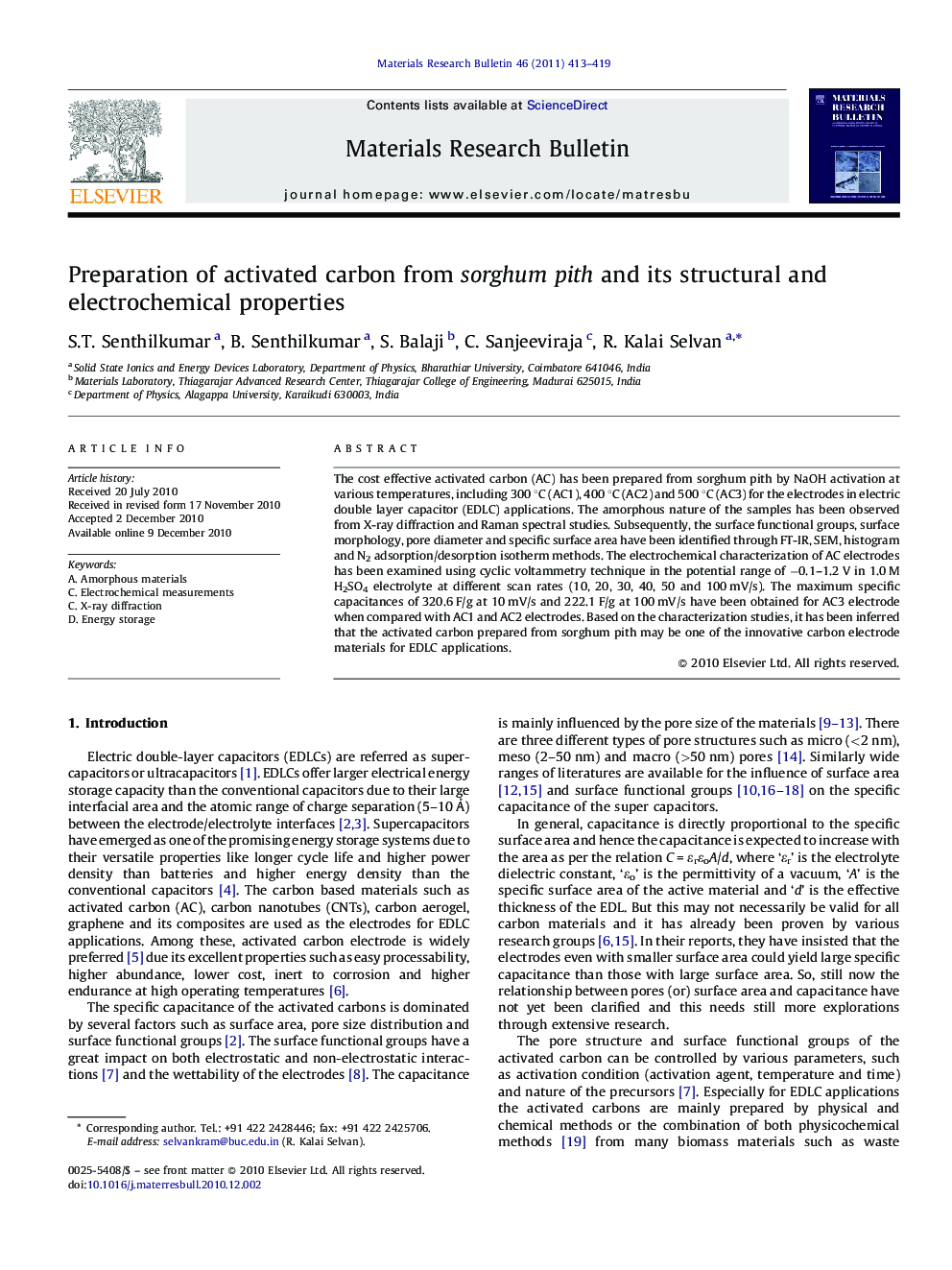| Article ID | Journal | Published Year | Pages | File Type |
|---|---|---|---|---|
| 1490280 | Materials Research Bulletin | 2011 | 7 Pages |
The cost effective activated carbon (AC) has been prepared from sorghum pith by NaOH activation at various temperatures, including 300 °C (AC1), 400 °C (AC2) and 500 °C (AC3) for the electrodes in electric double layer capacitor (EDLC) applications. The amorphous nature of the samples has been observed from X-ray diffraction and Raman spectral studies. Subsequently, the surface functional groups, surface morphology, pore diameter and specific surface area have been identified through FT-IR, SEM, histogram and N2 adsorption/desorption isotherm methods. The electrochemical characterization of AC electrodes has been examined using cyclic voltammetry technique in the potential range of −0.1–1.2 V in 1.0 M H2SO4 electrolyte at different scan rates (10, 20, 30, 40, 50 and 100 mV/s). The maximum specific capacitances of 320.6 F/g at 10 mV/s and 222.1 F/g at 100 mV/s have been obtained for AC3 electrode when compared with AC1 and AC2 electrodes. Based on the characterization studies, it has been inferred that the activated carbon prepared from sorghum pith may be one of the innovative carbon electrode materials for EDLC applications.
Graphical abstractFigure optionsDownload full-size imageDownload as PowerPoint slideResearch highlights▶ Sorghum pith as the cost effective raw material for activated carbon preparation. ▶ Physicochemical method/KOH activation for preparation of activated carbon is inexpensive. ▶ Activated carbon having lower surface area surprisingly delivered a higher specific capacitance. ▶ Treated at 500 °C activated carbon exceeds maximum specific capacitances of 320.6 F/g at 10 mV/s.
